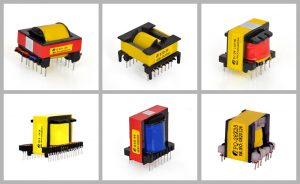Transformers are the unsung heroes of the electrical world, silently working behind the scenes to ensure the smooth transmission of power. Among the various types of transformers, one stands out as the most common and widely used. In this article, we will delve into the intricacies of this transformer, exploring its functions, applications, and significance in the modern world.
- The Power of the Distribution Transformer:
The most common type of transformer is the distribution transformer. These transformers play a vital role in the power distribution network, stepping down high-voltage electricity from power plants to a lower voltage suitable for consumption by households and businesses. They are responsible for ensuring a stable and reliable power supply to our daily lives. - Design and Components:
Distribution transformers consist of several key components, including a core, windings, and insulation. The core, typically made of laminated steel, provides a low-reluctance path for the magnetic flux. The windings, made of copper or aluminum, are responsible for transferring electrical energy between the primary and secondary sides of the transformer. Insulation materials ensure the safety and efficiency of the transformer. - Efficiency and Energy Conservation:
Distribution transformers are designed to operate at high efficiency levels, minimizing energy losses during power transmission. This not only reduces electricity costs but also contributes to environmental sustainability. Advanced technologies, such as amorphous metal cores and smart grid integration, further enhance the efficiency and performance of these transformers. - Applications in Various Industries:
Distribution transformers find applications in a wide range of industries, including residential, commercial, and industrial sectors. They are crucial for powering homes, offices, hospitals, factories, and infrastructure projects. Without distribution transformers, our modern way of life would be severely impacted, with disruptions in power supply affecting everything from communication systems to transportation networks. - Future Trends and Innovations:
As technology advances, distribution transformers are also evolving. Smart transformers, equipped with advanced monitoring and control systems, are becoming more prevalent. These transformers can self-diagnose, optimize energy usage, and communicate with the power grid, enabling efficient load management and predictive maintenance. Additionally, the integration of renewable energy sources into the power grid necessitates the development of transformers capable of handling fluctuating power inputs.
Conclusion:
The most common type of transformer, the distribution transformer, is the backbone of our power distribution network. Its efficient and reliable operation ensures a steady supply of electricity to meet our daily needs. As we move towards a more sustainable future, the role of distribution transformers will continue to evolve, adapting to new technologies and powering the world with efficiency and precision.








+ There are no comments
Add yours